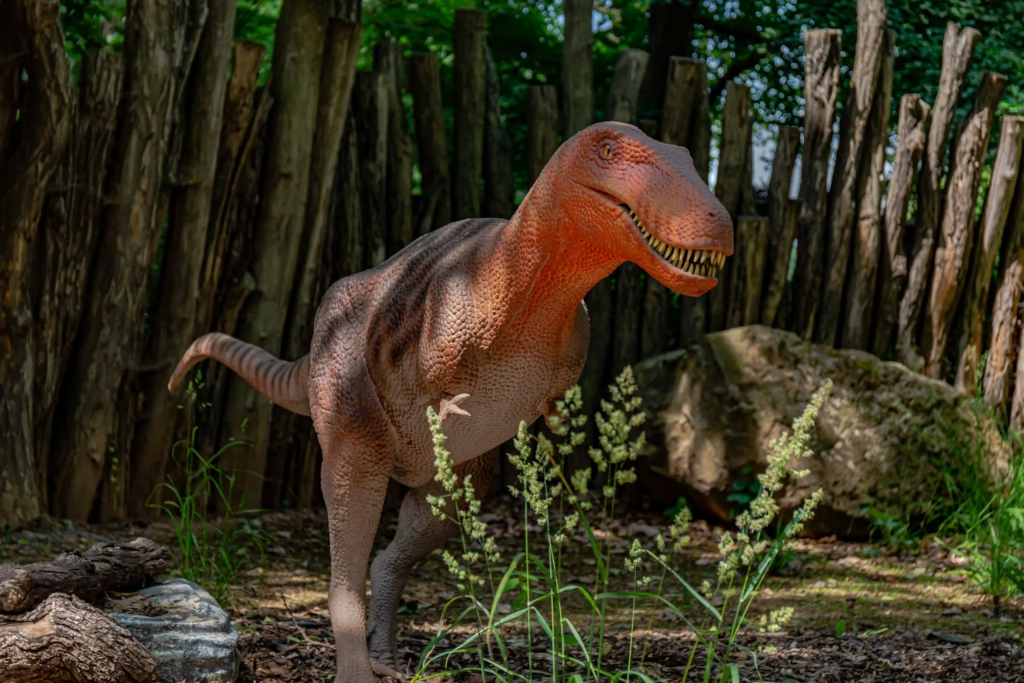Dinosaurs have fascinated humanity since the first fossils were scientifically identified in the early 19th century. These prehistoric creatures, with their massive size, fearsome appearance, and mysterious extinction, captured the public imagination in ways few other scientific discoveries have. It was perhaps inevitable that dinosaurs would make their way into cinema, evolving from scientific curiosities to movie monsters that have terrorized audiences for generations. This evolution represents a fascinating intersection of paleontology, popular culture, and filmmaking technology that continues to this day.
The Early Days: Silent Film Dinosaurs

Dinosaurs made their first notable cinematic appearances during the silent film era, establishing a foundation for what would become a long-lasting relationship between prehistoric creatures and the silver screen. In 1914, the animated film “Gertie the Dinosaur” by Winsor McCay introduced audiences to a friendly brontosaurus, marking one of the earliest dinosaur characters in cinema.
The 1925 adaptation of Arthur Conan Doyle’s “The Lost World” pushed technical boundaries with stop-motion animation by Willis O’Brien, bringing dinosaurs to life in a way audiences had never seen before. These early films established dinosaurs not just as scientific curiosities but as characters capable of driving narrative and creating spectacle. Despite technical limitations, these pioneering works demonstrated the public’s fascination with bringing prehistoric creatures into the modern world through the magic of cinema.
King Kong and the Birth of the Monster Movie
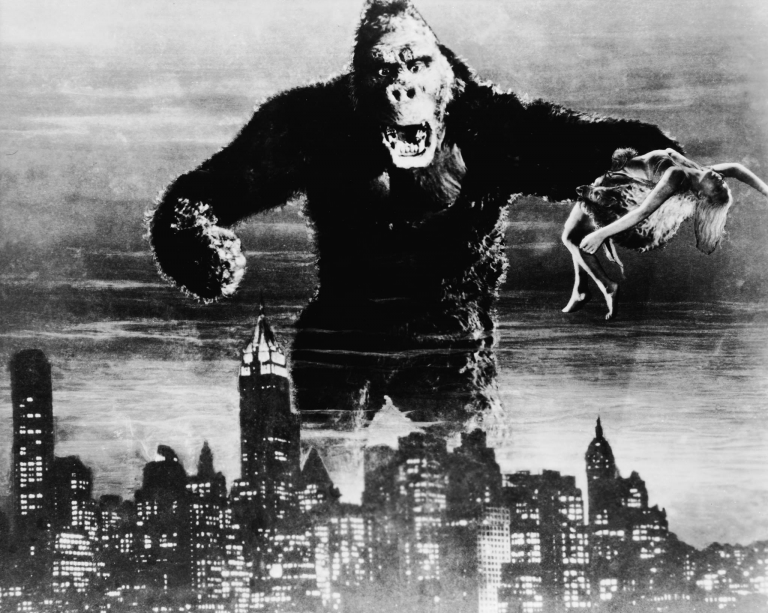
The 1933 film “King Kong” marked a pivotal moment in cinema history, establishing many conventions of the monster movie genre while featuring memorable dinosaur sequences. Willis O’Brien’s groundbreaking stop-motion effects allowed Kong to battle a Tyrannosaurus rex in what became one of the most iconic scenes in early special effects history. This film crucially positions dinosaurs as dangerous, ancient threats in opposition to both modern humanity and the film’s complicated monster protagonist.
The success of “King Kong” demonstrated the commercial potential of monster films featuring prehistoric creatures, establishing a template that would influence monster movies for decades to come. The film’s dinosaurs weren’t scientifically accurate by today’s standards, but they served a more important purpose as symbols of primordial danger and the untamed wilderness of Skull Island. “King Kong” effectively cemented dinosaurs’ place in the pantheon of cinema monsters, transforming them from scientific curiosities to threatening antagonists.
The Influence of Ray Harryhausen
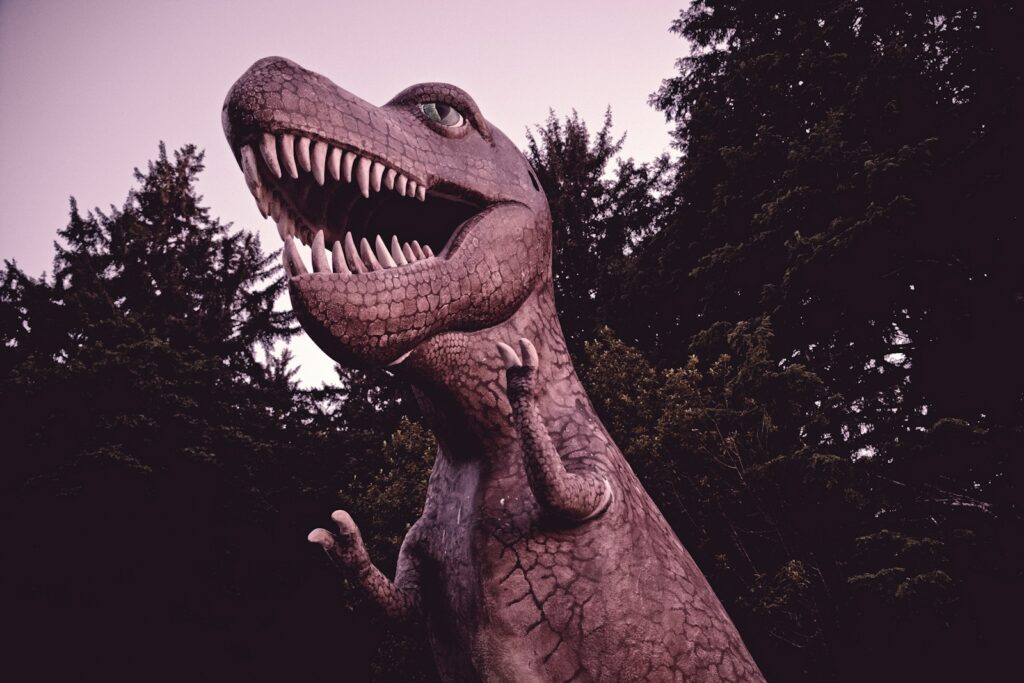
Special effects pioneer Ray Harryhausen brought dinosaurs and prehistoric creatures to life throughout the 1950s and 1960s, elevating them to new heights of cinematic monstrosity. His distinctive stop-motion animation technique, which he called “Dynamation,” allowed prehistoric creatures to interact seamlessly with live actors, creating unprecedented realism for the era. In films like “The Beast from 20,000 Fathoms” (1953) and “One Million Years B.C.” (1966), Harryhausen’s creatures weren’t always strictly dinosaurs—often being more generic “prehistoric monsters”—but they reinforced the public association between dinosaurs and monster movie threats.
His technical innovations and artistic sensibilities gave these creatures personality and presence that transcended their scientific accuracy. Harryhausen’s work proved so influential that generations of filmmakers, including Steven Spielberg, cite him as a major inspiration for their own monster movies. Through his craftsmanship, dinosaurs and dinosaur-like creatures became embedded in popular culture as the ultimate movie monsters, capable of inspiring both terror and awe.
Cold War Anxieties and Nuclear Dinosaurs
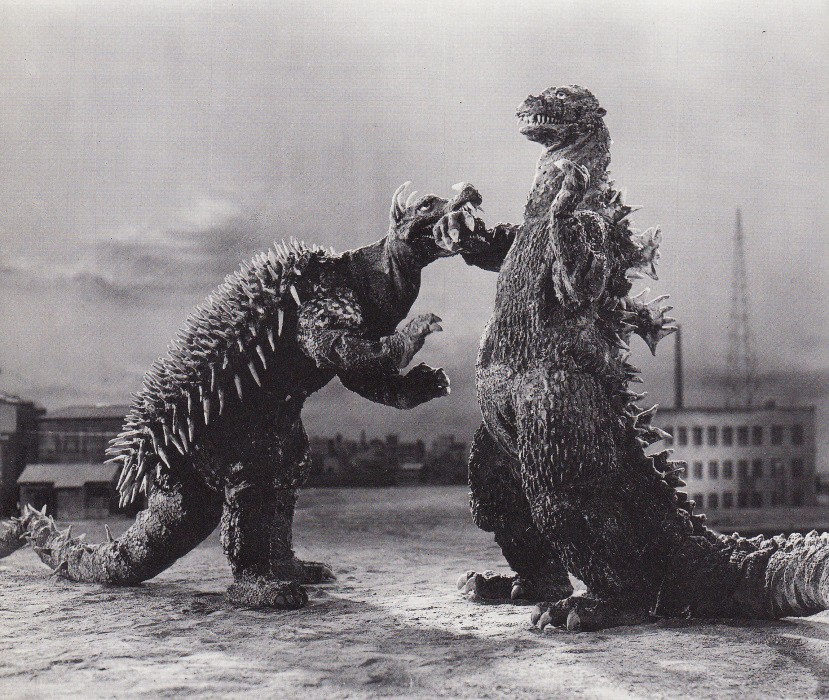
The post-World War II era saw dinosaurs transformed into metaphors for nuclear anxiety, reflecting contemporary fears about atomic power and radiation. Films like “The Beast from 20,000 Fathoms” (1953) and “Godzilla” (1954)—while not featuring traditional dinosaurs—drew heavily on dinosaur imagery to create their atomic monsters. These creatures were often presented as prehistoric animals awakened or mutated by nuclear testing, creating a direct link between humanity’s most destructive technology and the earth’s most fearsome prehistoric predators.
The science fiction boom of the 1950s frequently positioned dinosaur-like creatures as consequences of human technological overreach, serving as warnings about scientific irresponsibility. This period solidified the cultural connection between dinosaurs and monsters in public consciousness, as filmmakers repeatedly drew on dinosaur characteristics to create threats that embodied contemporary anxieties. The success of these films demonstrated that dinosaurs and dinosaur-inspired creatures provided the perfect vehicle for exploring the terrifying possibilities of the atomic age.
Dinosaurs Meet Science Fiction
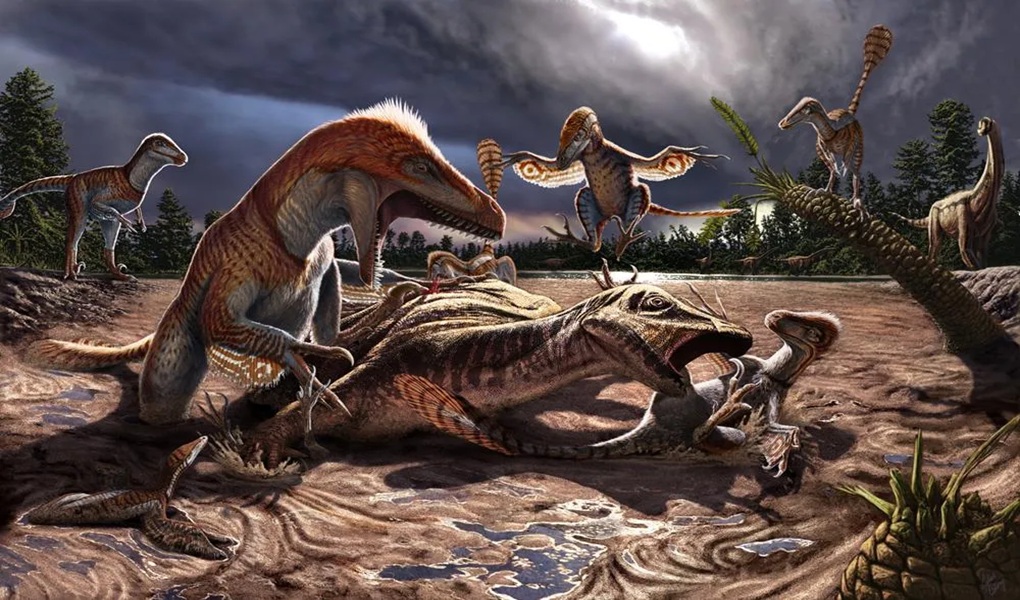
Science fiction films expanded the dinosaur monster movie genre by creating narratives that brought prehistoric creatures into the modern world. “The Valley of Gwangi” (1969), combining cowboys with dinosaurs, showcased Ray Harryhausen’s talents while exploring what happens when modern humans encounter living prehistoric animals. Films like “The Land That Time Forgot” (1975) and “At the Earth’s Core” (1976), based on Edgar Rice Burroughs’ novels, discovered lost worlds where dinosaurs continued to exist, providing new environments for dinosaur-human confrontations.
These films established a template for integrating dinosaurs into adventure narratives, positioning them as obstacles that human protagonists must overcome through ingenuity and courage. The science fiction approach allowed filmmakers to sidestep questions of historical accuracy while preserving dinosaurs’ menacing characteristics. This subgenre remains popular, with modern films still exploring the concept of isolated pockets where dinosaurs survived extinction or were somehow reintroduced to the modern world.
The Jurassic Park Revolution

Steven Spielberg’s 1993 blockbuster “Jurassic Park” fundamentally transformed dinosaurs in cinema, setting new standards for both scientific accuracy and terrifying monster movie thrills. The film’s groundbreaking combination of CGI and practical effects created dinosaurs that moved and behaved in ways that seemed unprecedentedly realistic to audiences.
While making concessions to entertainment (including exaggerating the size of Velociraptors and adding a frill to the Dilophosaurus), the film worked closely with paleontologists to create dinosaurs that reflected scientific understanding of the early 1990s. “Jurassic Park” balanced its monster movie elements with a sense of awe and wonder, making its dinosaurs simultaneously terrifying predators and magnificent animals worthy of admiration.
The film’s commercial success—it became the highest-grossing film of all time upon release—demonstrated the enduring appeal of dinosaurs as cinematic monsters while updating them for modern audiences. Spielberg’s approach influenced nearly all subsequent dinosaur depictions in film, establishing a new paradigm that combined scientific credibility with monster movie excitement.
Balancing Science and Spectacle

The post-Jurassic Park era has grappled with the tension between scientific accuracy and monster movie requirements when depicting dinosaurs on screen. Filmmakers must balance emerging paleontological discoveries, such as evidence that many dinosaurs had feathers, with audience expectations shaped by decades of scaly, reptilian depictions.
Movies like “Jurassic World” (2015) explicitly acknowledge this tension, with the fictional park’s geneticist admitting they engineer dinosaurs to match public expectations rather than scientific reality. Documentary series like “Walking with Dinosaurs” have attempted more accurate portrayals, while still employing dramatic narratives that sometimes frame dinosaurs as monstrous antagonists. This balancing act reflects the dual nature of dinosaurs in popular culture: they are simultaneously scientific subjects and mythological monsters.
Modern dinosaur films often justify scientific inaccuracies through plot devices like genetic manipulation or simply prioritize entertainment value over education. The most successful productions manage to incorporate current science while preserving the awe-inspiring and sometimes terrifying qualities that make dinosaurs effective movie monsters.
The Allure of the Predator: T. Rex as Monster Icon

The Tyrannosaurus rex has evolved into cinema’s definitive dinosaur monster, embodying primal fear through its combination of enormous size, massive jaws, and predatory nature. From the T. rex battling King Kong in 1933 to the iconic Jurassic Park T. rex escape sequence, this dinosaur has consistently received star treatment in monster movies. Filmmakers have recognized the T. rex’s unique ability to generate both terror and fascination, often positioning it as the ultimate challenge for human protagonists to overcome.
The creature’s relatively recent scientific discoveries—including debates about whether it was a predator or scavenger, and how it moved—have done little to diminish its cinematic impact as the quintessential movie monster. The T. rex’s cultural status transcends scientific accuracy; it functions as a symbol of nature’s power and the limits of human control. Other large predatory dinosaurs like Spinosaurus and Giganotosaurus have attempted to usurp the T. rex’s position in films like “Jurassic Park III,” but the “tyrant lizard king” maintains its preeminent position in cinema’s dinosaur hierarchy.
Beyond Extinction: Alternative Dinosaur Narratives
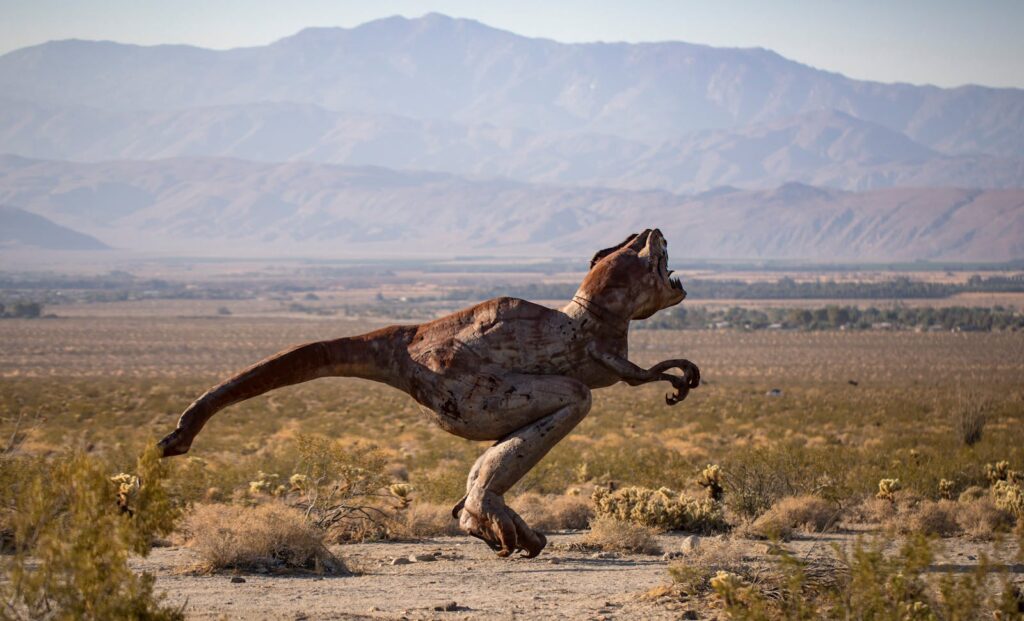
Not all dinosaur monster movies frame their prehistoric stars as straightforward threats, with some productions developing more complex narratives around these ancient creatures. The “Land Before Time” animated series, while aimed at children, portrays dinosaurs as sympathetic protagonists facing environmental challenges rather than as monsters.
“The Good Dinosaur” (2015) imagined an alternate timeline where dinosaurs never went extinct and developed intelligence, completely inverting the typical monster movie dynamic. “Dinotopia” explored a utopian human-dinosaur society, presenting dinosaurs as intelligent beings capable of peaceful coexistence with humans. These alternative approaches demonstrate the versatility of dinosaurs as cinematic subjects, capable of fulfilling roles beyond simple monstrosity.
However, even these more nuanced portrayals often incorporate elements of danger and threat, acknowledging the inherent drama of creatures so physically powerful and evolutionarily distant from humanity. These productions expand the dinosaur movie genre while still drawing on the fundamental qualities that make dinosaurs effective movie monsters: their size, power, and prehistoric mystique.
The B-Movie Legacy: Dinosaurs on a Budget
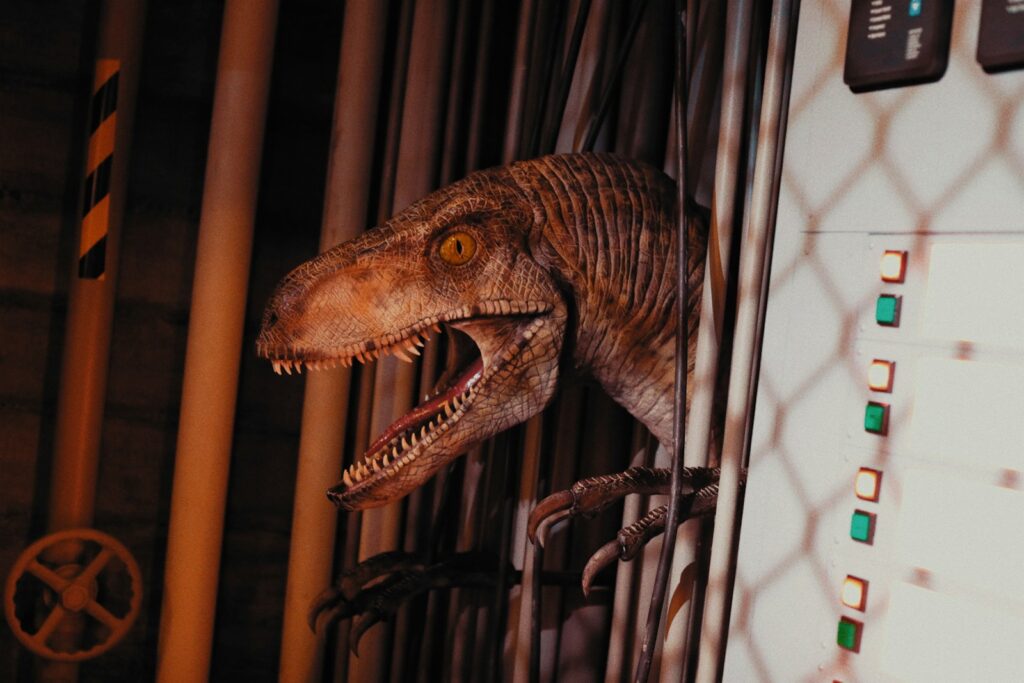
Low-budget dinosaur monster movies have thrived alongside their blockbuster counterparts, creating a distinct subgenre with its own conventions and appeal. Films like “Carnosaur” (1993), “Dinosaur Island” (1994), and the mockbuster “Transmorphers” series embrace limited budgets and questionable science to deliver unabashed monster movie thrills.
The Syfy channel has particularly embraced this approach with films like “Sharktopus vs. Pteracuda” that combine dinosaur elements with other creatures to create hybrid monsters. These productions rarely attempt scientific accuracy, instead prioritizing creative monster designs, excessive violence, and often intentionally campy performances. While dismissed by critics, these B-movies maintain a dedicated audience and continue the tradition of dinosaurs as pure movie monsters unconstrained by scientific concerns.
The rise of CGI has made dinosaur effects more accessible to low-budget filmmakers, resulting in a proliferation of direct-to-video and streaming dinosaur monster movies. This B-movie tradition represents dinosaurs at their most monstrous, stripped of educational pretense and reduced to their most primal, threatening characteristics.
Dinosaurs in the Digital Age

Advancing technology has transformed how dinosaurs appear as movie monsters, with digital tools enabling increasingly sophisticated depictions. Modern CGI allows for unprecedented detail in dinosaur anatomy, movement, and behavior, creating more believable prehistoric threats than ever before. Television productions like “Prehistoric Planet” employ documentary techniques with state-of-the-art effects to create dinosaurs that reflect current scientific understanding while still emphasizing dramatic moments of predation and conflict.
Video games have emerged as another medium for dinosaur monster experiences, with titles like “Dino Crisis” and “ARK: Survival Evolved” allowing players to directly confront prehistoric threats. Virtual reality experiences and theme park attractions offer immersive encounters with dinosaurs, blurring the line between film monsters and simulated reality. As technology advances, the visual gap between scientifically accurate dinosaurs and monstrous movie versions continues to narrow. The digital age has democratized dinosaur creation, allowing independent filmmakers to produce credible dinosaur threats that would have required major studio budgets in previous decades.
The Cultural Impact: Why Dinosaurs Endure as Movie Monsters

Dinosaurs have maintained their position as premier movie monsters for over a century due to their unique combination of scientific reality and monstrous qualities. Unlike purely fictional monsters like vampires or aliens, dinosaurs actually existed, giving them an authenticity that resonates with audiences while allowing filmmakers to draw on scientific discoveries for inspiration. Their complete extinction means filmmakers have considerable creative freedom in depicting them, as no living examples exist to contradict cinematic interpretations.
Dinosaurs serve as perfect “natural monsters” that require no supernatural explanation or alien origin to justify their threatening qualities—they represent earth’s own monsters from deep time. The ongoing discoveries in paleontology ensure dinosaurs remain in the news, providing fresh material for filmmakers to incorporate into monster movies. Children’s fascination with dinosaurs creates a ready audience that grows up with these creatures, maintaining intergenerational appeal that few other movie monsters can match. This combination of factors has secured dinosaurs’ position as enduring staples of monster cinema, bridging the gap between educational content and entertainment.
Conclusion
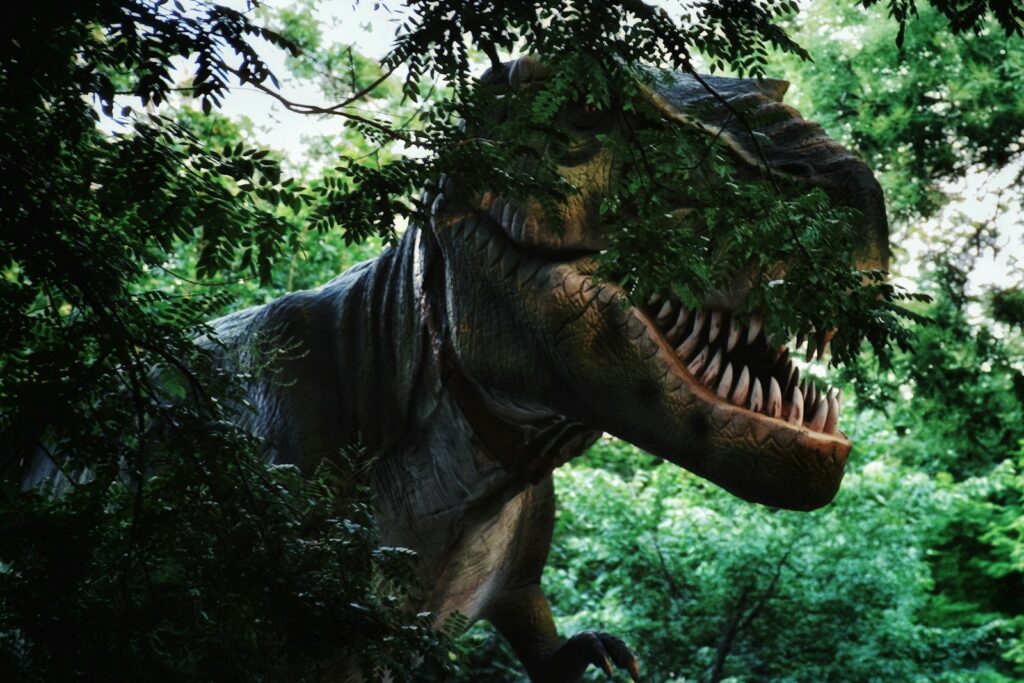
From their early appearances in silent films to their digital dominance in modern blockbusters, dinosaurs have maintained a unique position in cinema as creatures that bridge science and spectacle. Their evolution as movie monsters parallels advances in both paleontology and film technology, creating a fascinating dialogue between scientific discovery and popular entertainment.
What makes dinosaurs particularly effective as movie monsters is their basis in reality—these creatures actually ruled the Earth for millions of years—combined with their alien nature as beings from a time utterly removed from human experience. As long as dinosaurs continue to captivate our imagination and new discoveries reshape our understanding of these prehistoric creatures, they will likely remain fixtures in monster movies, continuing their reign as cinema’s most enduring natural monsters.

